Historical Architecture of Grosse Pointe – Relocated – Part 1
Last week we went to Lincoln Road to review three superb properties designed by George W. Graves. Located on the same block between Maumee and Jefferson, they were completed between 1910 and 1918, in Georgian, Colonial, and English Tudor styles.
Over the next couple of weeks we would like to present the story of four homes that have been relocated. These homes vary in size, and all four were relocated prior to 1930 – from just around the corner to several miles away – an incredible undertaking both logistically and architecturally. This week, in part 1, we focus on two grand properties that were once neighboring residences located next to the river in Indian Village.
15520 Windmill Pointe – Relocated from 8192 East Jefferson Avenue
In 1903, John B. Ford commissioned Alpheus Chittenden to build a grand mansion on the riverside in Indian Village – located at 8192 East Jefferson Avenue. Ford was the son of entrepreneur Captain John Baptiste Ford who founded the Pittsburg Plate Glass Company in 1883, along and the Michigan Alkali Company in Wyandotte, in 1893. Image courtesy of: Wayne State University’s Virtual Motor City Collection.
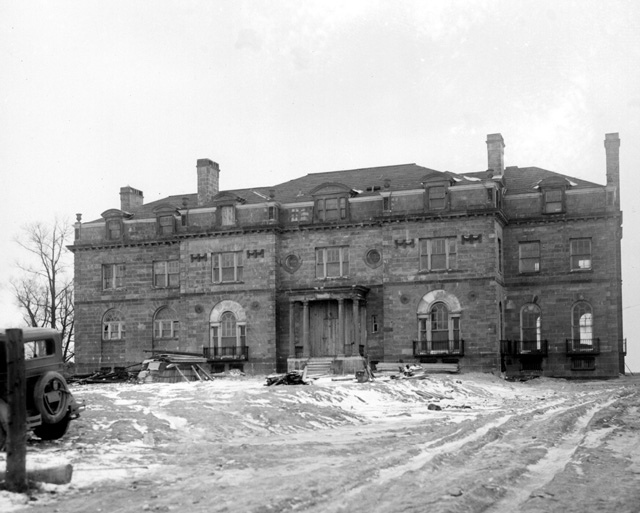
Alpheus Chittenden was one of the first architects in Detroit to embrace the Georgian style at the turn of the century. Having trained at the Massachusetts Institute of Technology and also in Germany, his flawless attention to architectural detail was second to none. He was known for his grand city mansions, country estates, and Georgian revival residences.
Chittenden opted to design Ford’s new home in an Italian renaissance revival approach to compliment the close proximity to the river. The 10,500 sq ft residence was constructed from limestone; it had exquisite arches above the windows, grand archways at the rear of the home, along with a dominant central portico covered front entrance. Complex features such as quoins (cornerstones), modillions (ornamental brackets under the roof line) were incorporated, along with beautiful detailing on the front elevation. Image courtesy of: the Library of Congress.
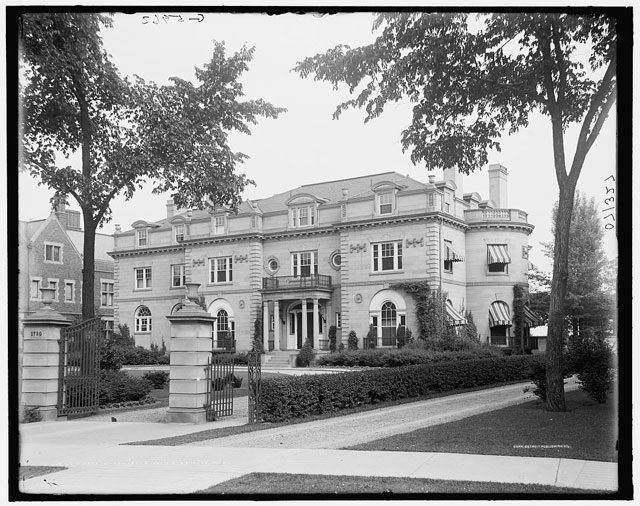
Inside, intricate plasterwork was an integral part to the décor in many of the rooms. The property has a 21’ x 32’ sq ft impressive foyer and a grand sweeping staircase. Many rooms feature decorative limestone fireplaces, including the library (19’ x 27’ sq ft), the den (19’ x 27’ sq ft), the living room (17’ x 29’ sq ft) and the dining room (17’ x 32’) both of which have large bay windows overlooking the terrace. A smaller screened terrace at the read of the home connects to the larger open terrace that runs across the majority of the rear of the property. The second floor has a large balcony that can be accessed by the two main bedrooms (both with large bay windows); there are three smaller bedrooms, a huge boudoir with a fireplace, plus additional quarters for maids.


In 1928, John B. Ford’s son and daughter-in-law, Frederick S. and Esther Ford (daughter of Pewabic Pottery’s co-founder Horace J. Caulkins), resided in the property. During that year the couple made the monumental decision to move the house to Windmill Pointe. Contrary to rumors the house wasn’t floated via barge along the Detroit River, it was dismantled and moved by truck to its new location at 15520 Windmill Pointe.
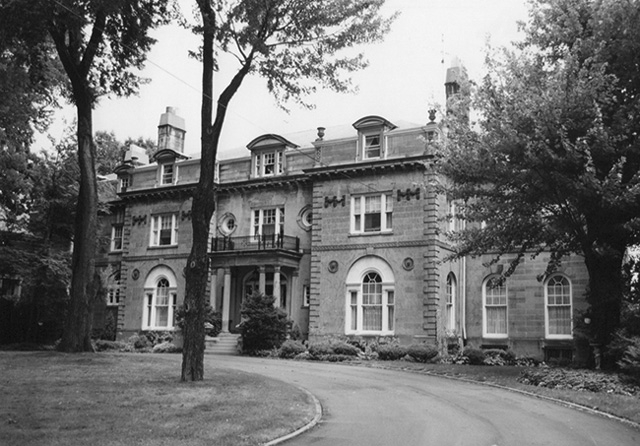
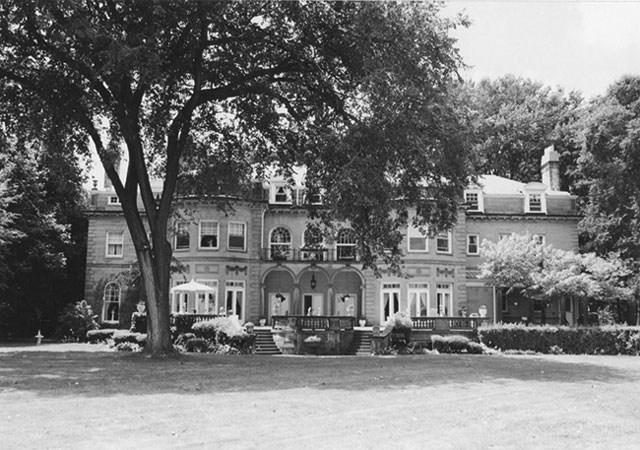
Charles Kotting, the former partner of Alpheus Chittenden, was tasked with supervising the relocation. It is unclear whether the floor plan remained exactly the same after the move, but it is noted the original façade of the house when located at Indian Village was more ambitious than at its new location on Windmill Pointe. The Ford’s lived in their newly relocated home from 1929 – 1951. Distance moved: 4.5 miles
41 Provencal – Relocated from 8191 East Jefferson Avenue
In 1906, Albert Kahn was commissioned by Lewis H. Jones to design a large mansion in Indian Village – located at 8191 East Jefferson Avenue. Lewis H. Jones was president of the Detroit Copper and Brass Rolling Mills Company, along with being an active official in many other large manufacturing projects and organizations throughout the city. Image courtesy of: picryl.com
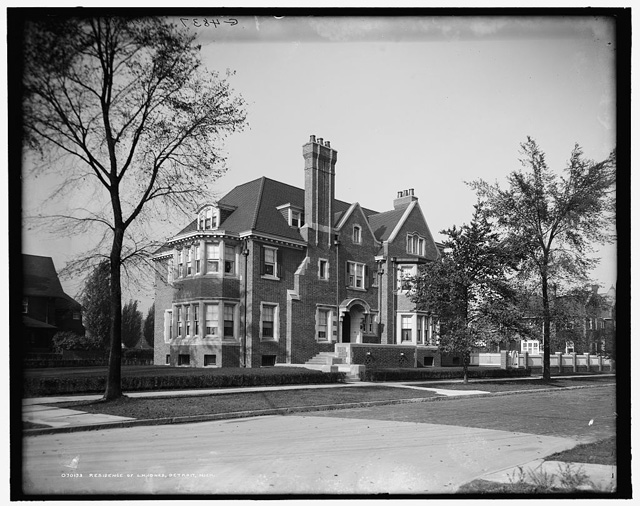
The home Albert Kahn created for Lewis Jones was one of grandeur. The design encompassed a classic Tudor Revival style and incorporated elements of the Arts and Crafts Movement throughout the interior of the home. It was constructed from brick with fine limestone trim around the windows and doors. As one would expect from Kahn’s work the property has many defining features such as – the large chimney above the front façade, the immense bay window in the living room, elegant detailing, along with a bonnet arch above the front entrance.
By the late 1920’s Jefferson had transitioned into a busy commercial street, and the tranquility the Jones’s had once enjoyed in their home was becoming a distant memory. The family decided to move to the calmer, but now firmly established community of Grosse Pointe Farms. Not wanting to leave their beloved home behind they took it with them – all 8,300 sq ft and 18 rooms of it – relocating to 41 Provencal Road. While their house was carefully being dismantled brick by brick the Jones family resided in Grosse Pointe Village.
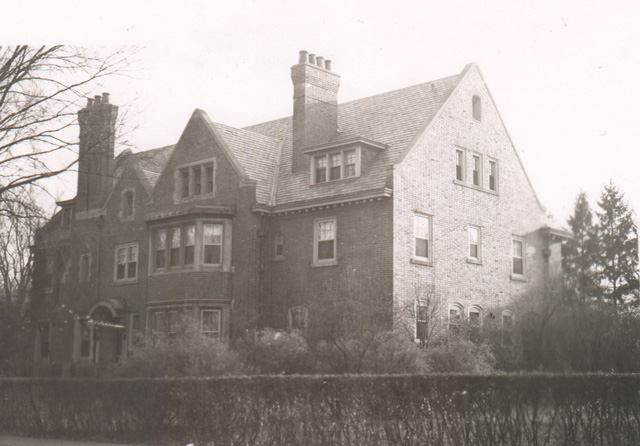
Before the home was rebuilt Mr. Jones opted to incorporate the latest technology available during the era, including up-to-date heating, plumbing and electrical systems. However, the family elected to retain the sublime arts and crafts decorative elements that were so integral to the design of the interior of the home. It is reported the majority of the house remained unchanged, aside, we believe, to a structural change that was made to the roof, which was raised to expand the third floor, while the library was enlarged to incorporate a service hallway. Source: Grosse Pointe Historical Society.
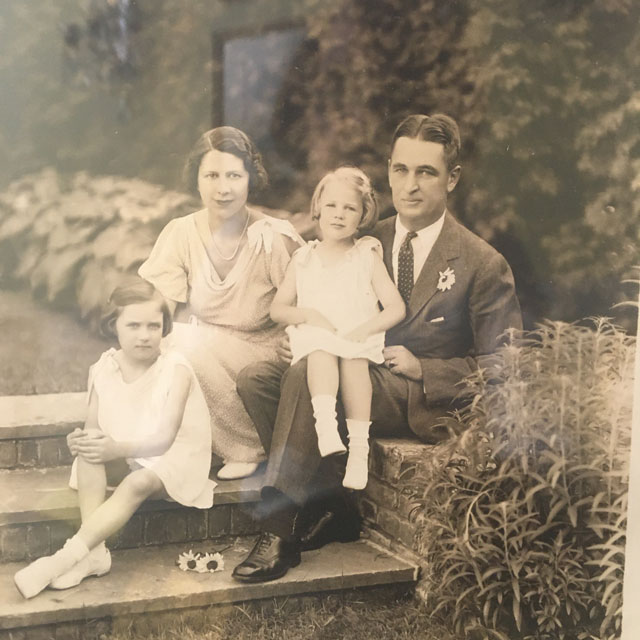
It appears Mr. and Mrs. Lewis resided in the home until the late 1930’s. At which point their daughter Marion and her husband Lockhart Wilbur lived in the property. Mr. and Mrs. Wilbur’s granddaughter, Cynthia Drayton, kindly sent us this photo of her mother, Cynthia Wilbur, sitting on the left with her parents, Lockhart Wilbur and Marion Jones Wilbur, and her sister Marion Wilbur – believed to be on the steps in the garden of 41 Provencal. Distance moved: 7.6 miles
We will continue the story next week of two smaller historic properties that have been relocated.
*Photos courtesy of the Higbie Maxon Agney archives unless stated.
Written by Katie Doelle
Copyright © 2020 Katie Doelle

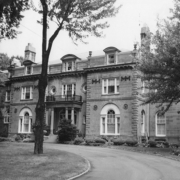

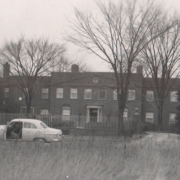
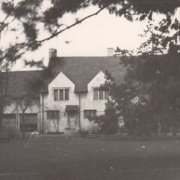
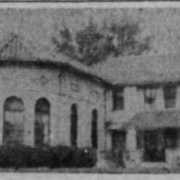
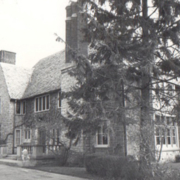



Leave a Reply
Want to join the discussion?Feel free to contribute!